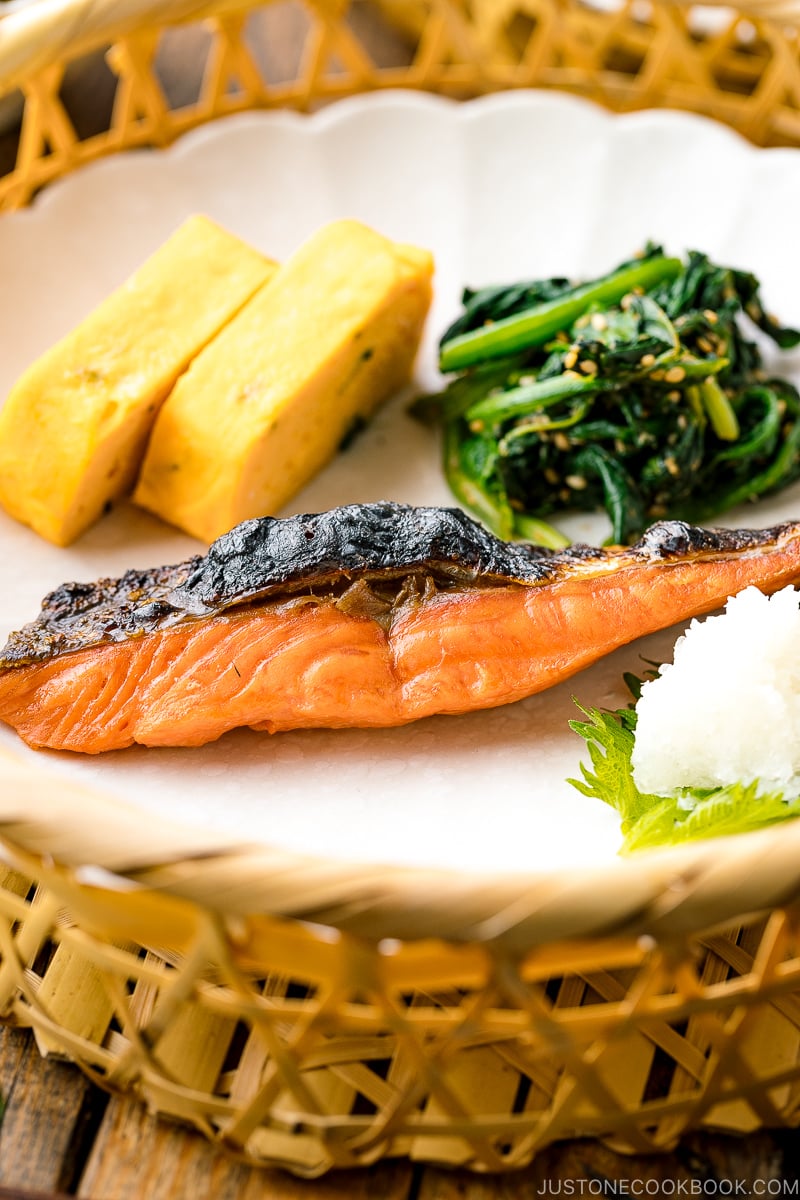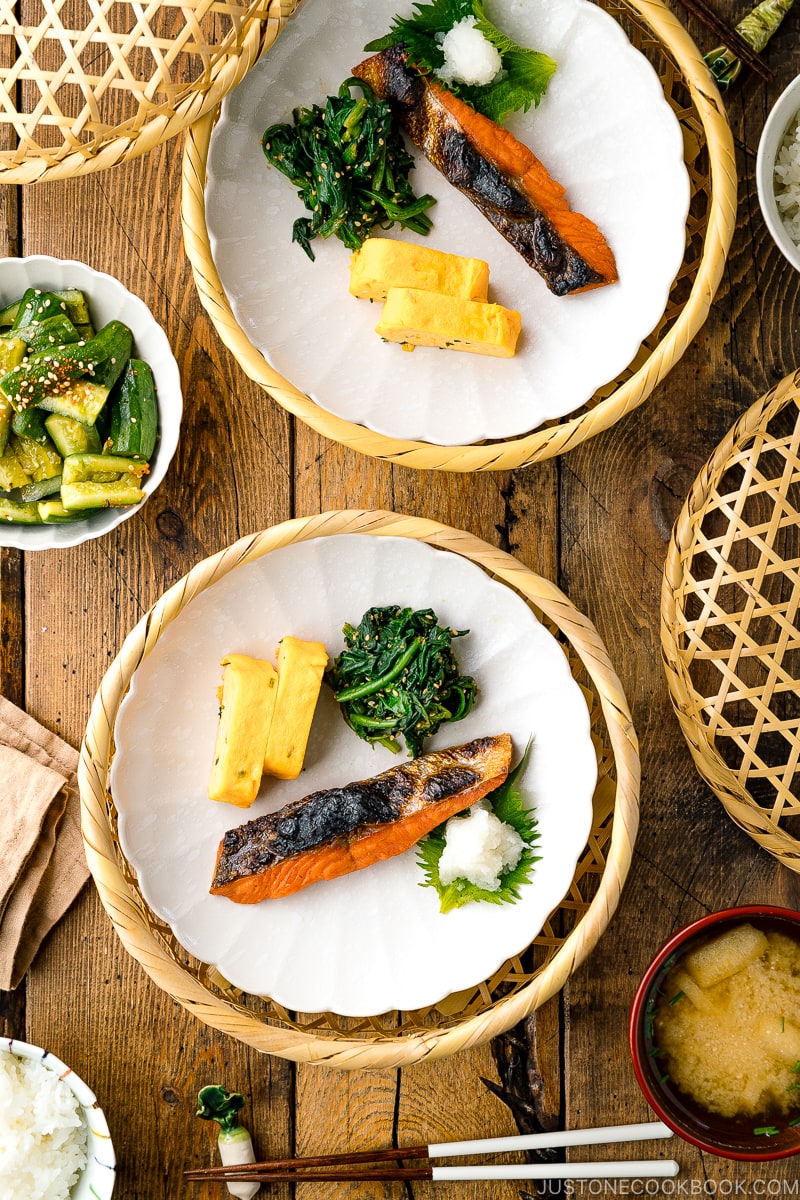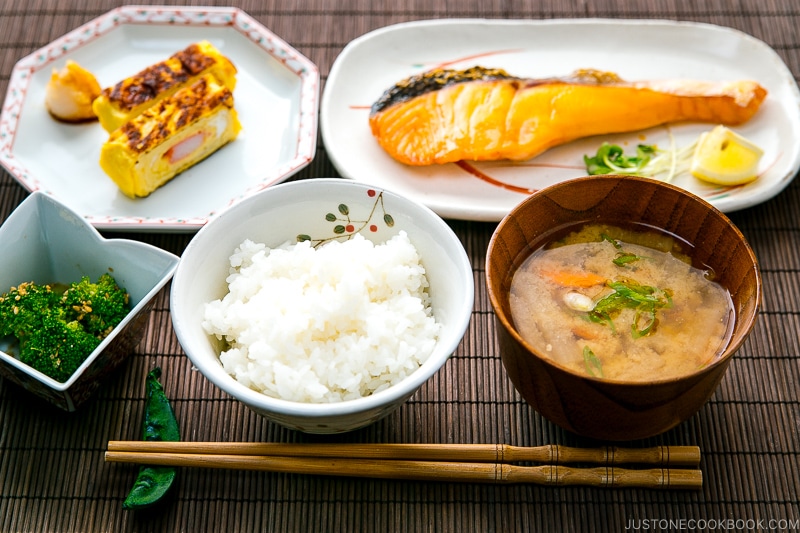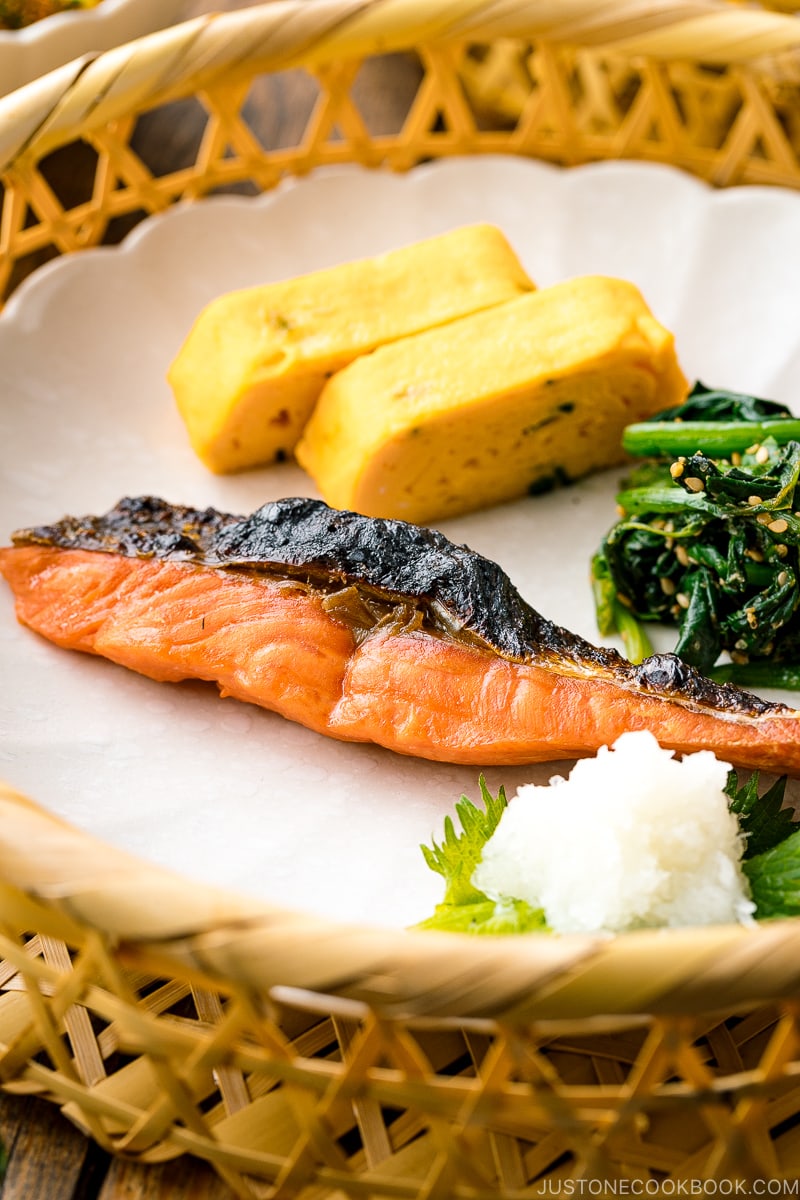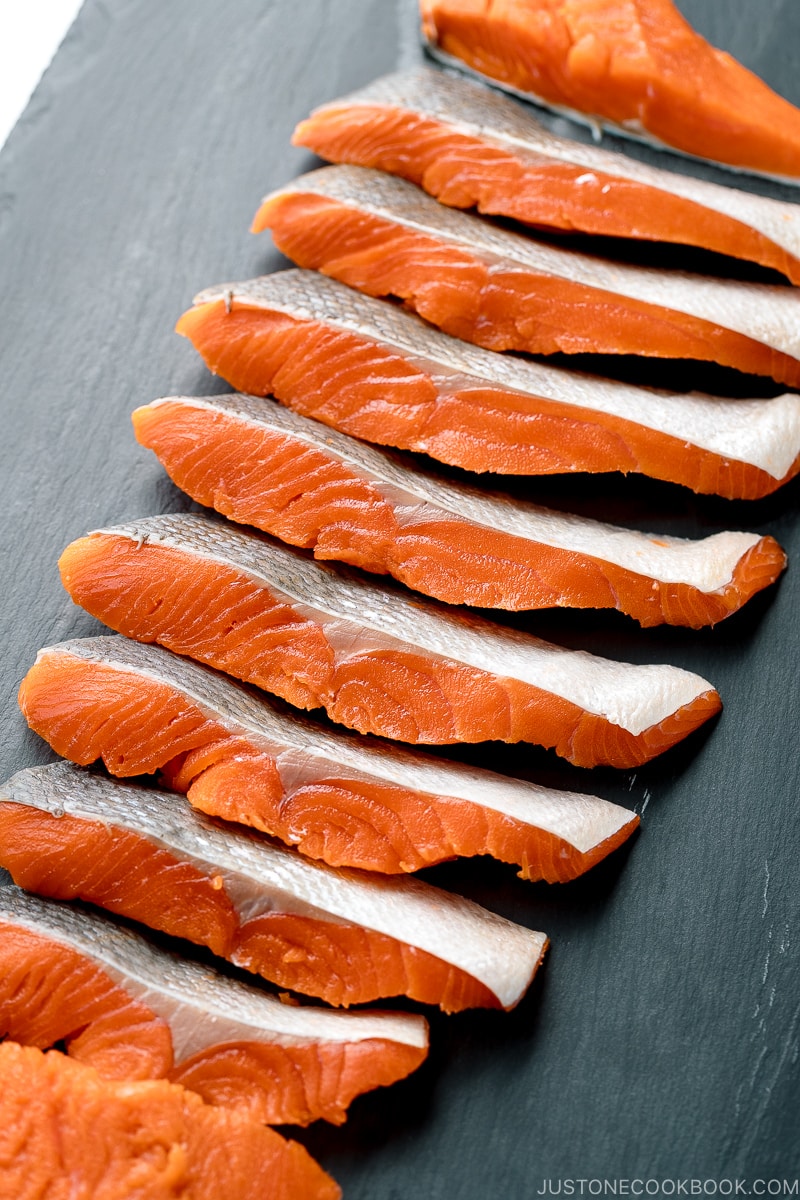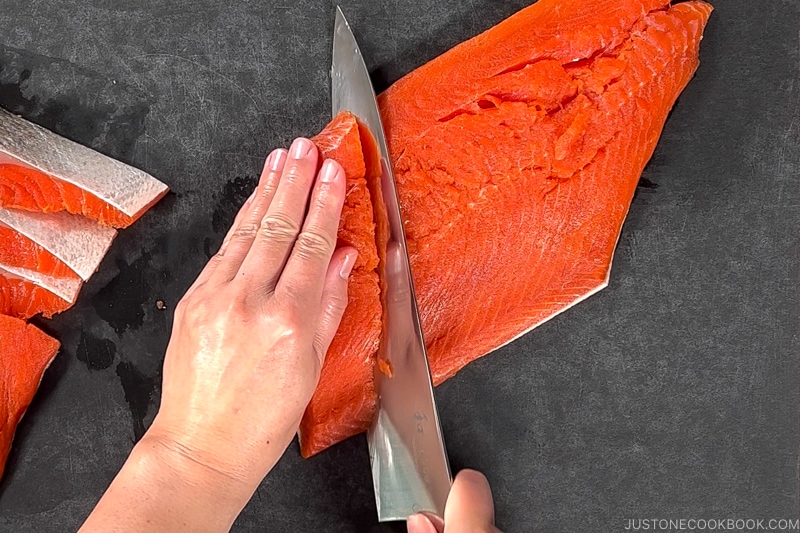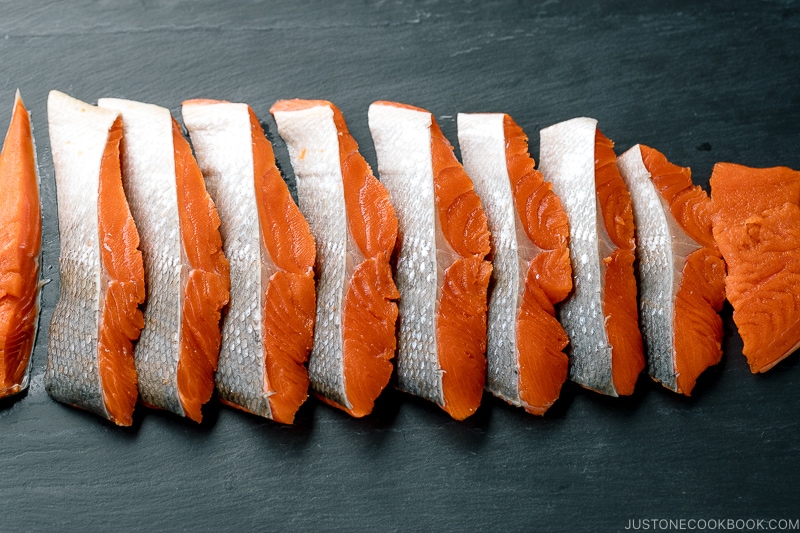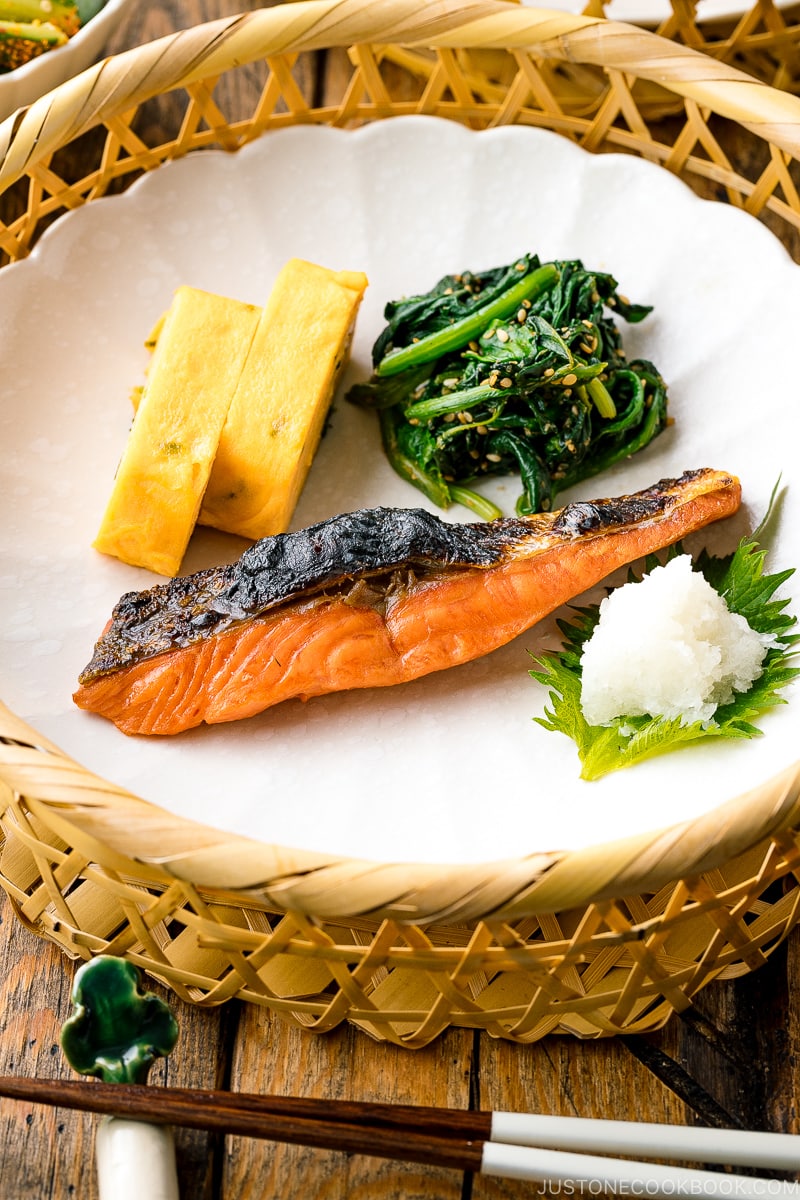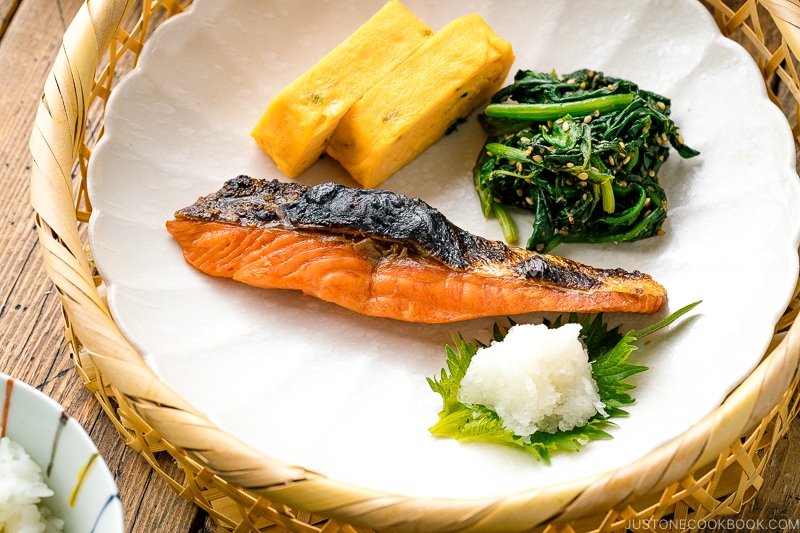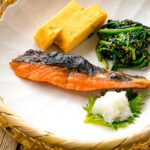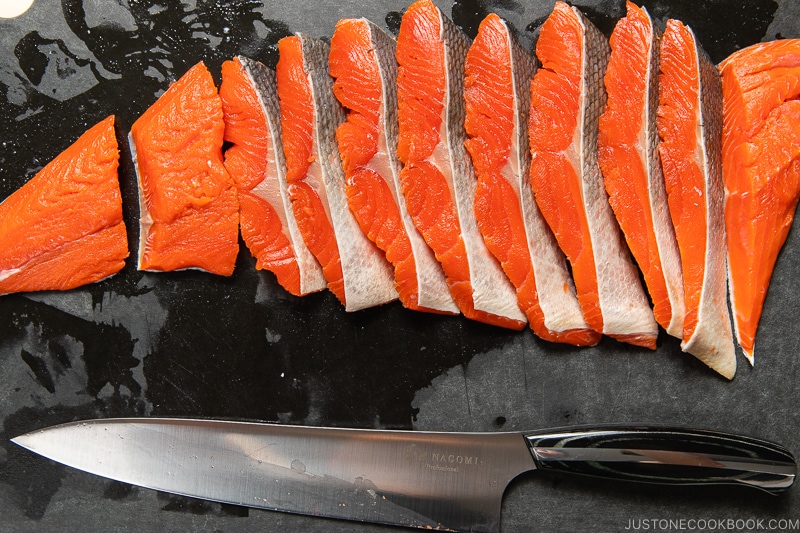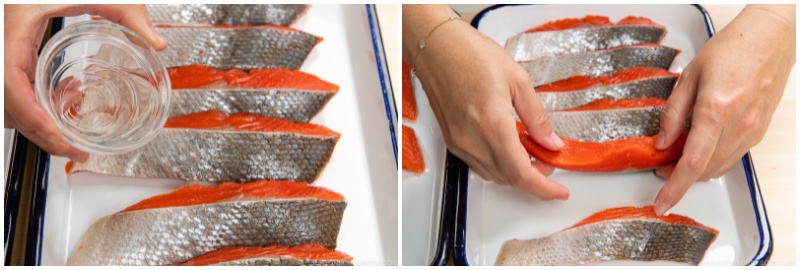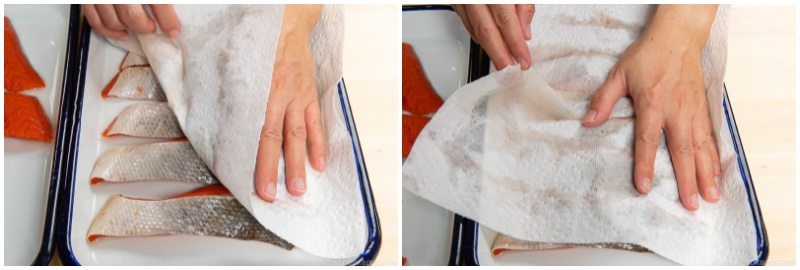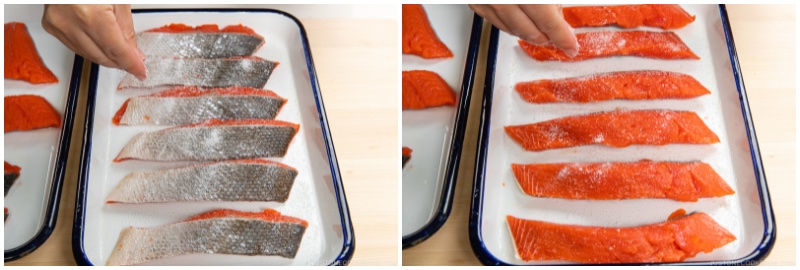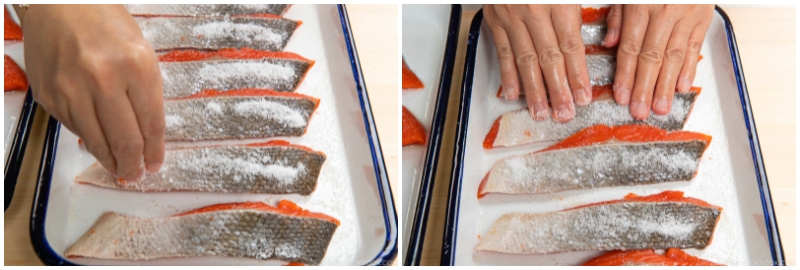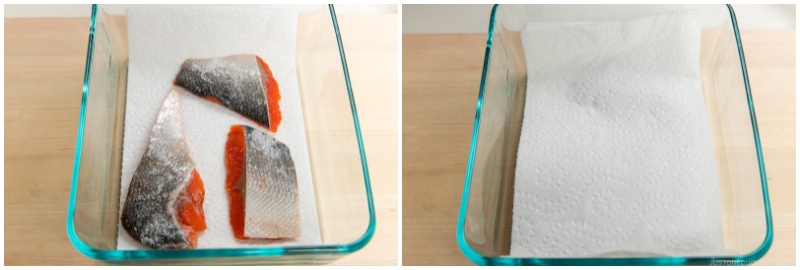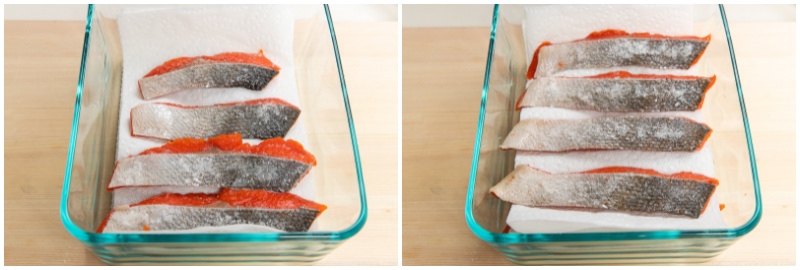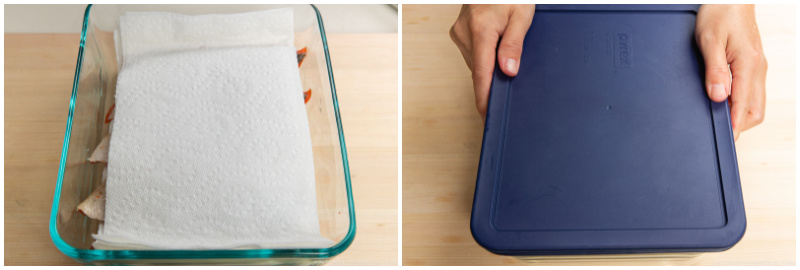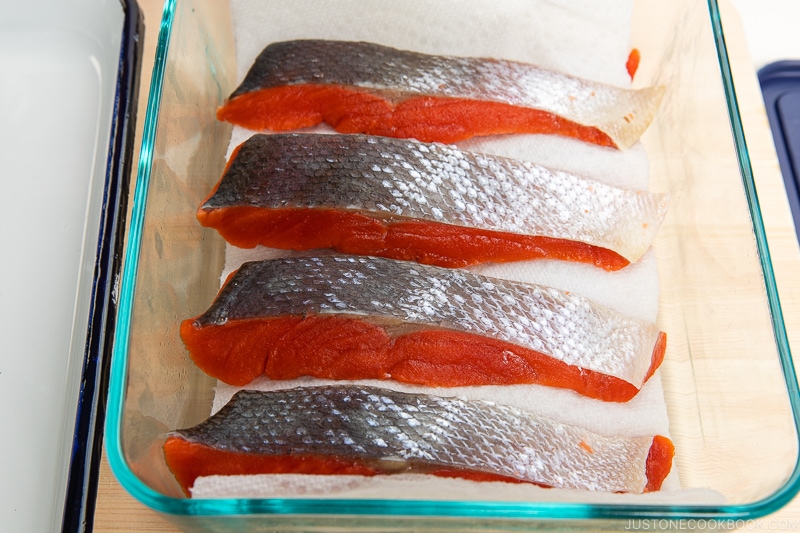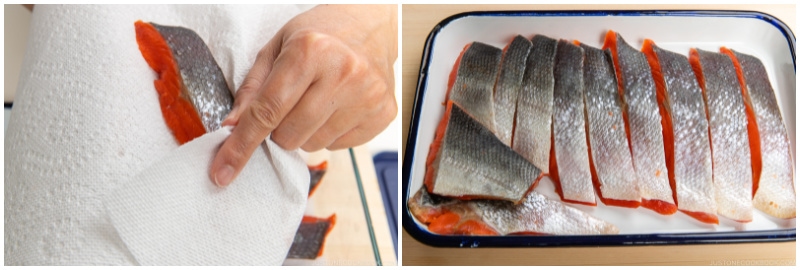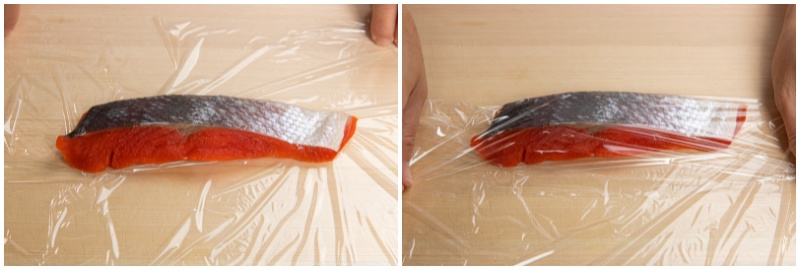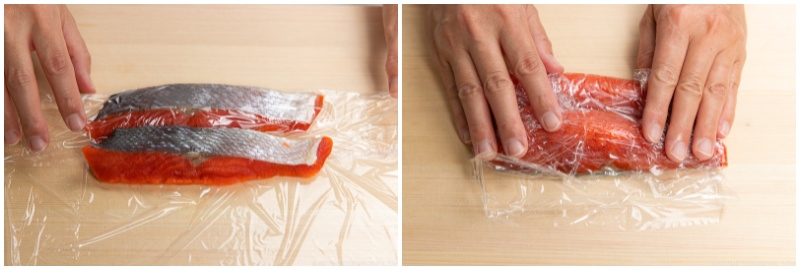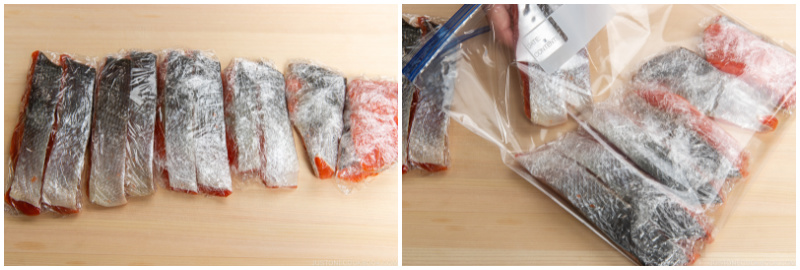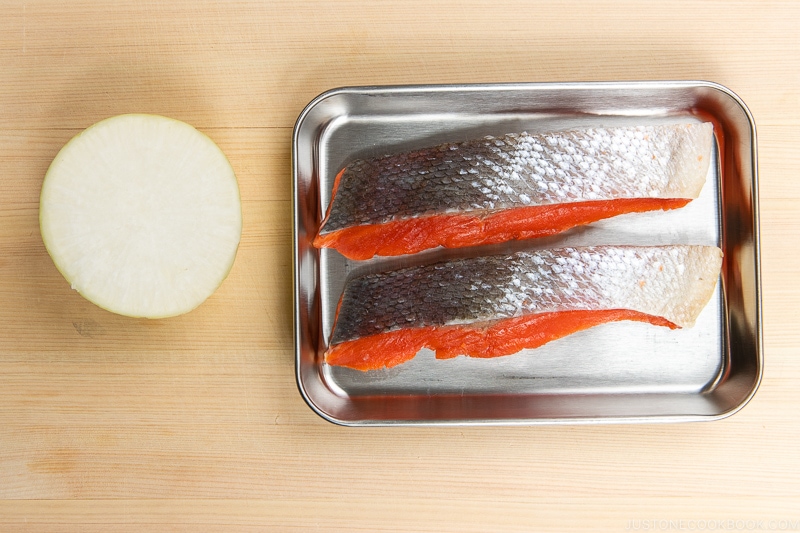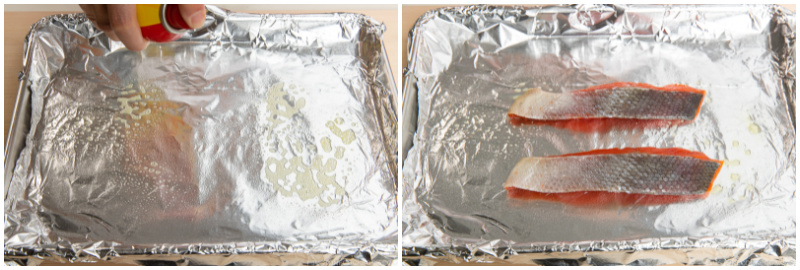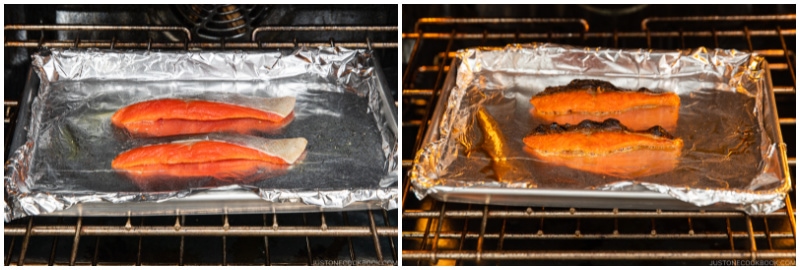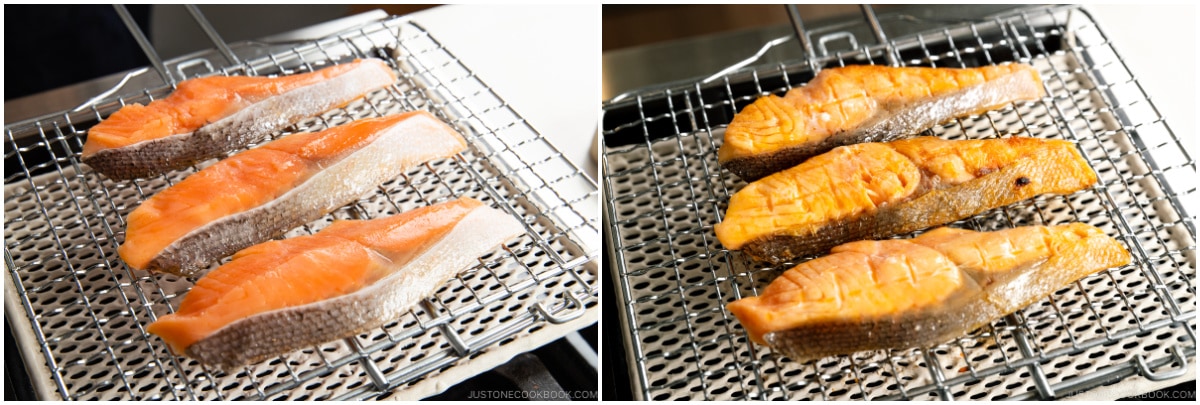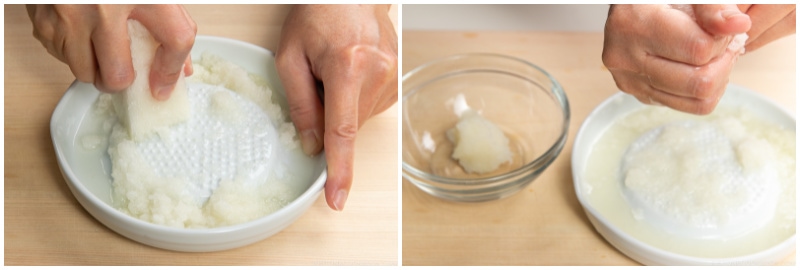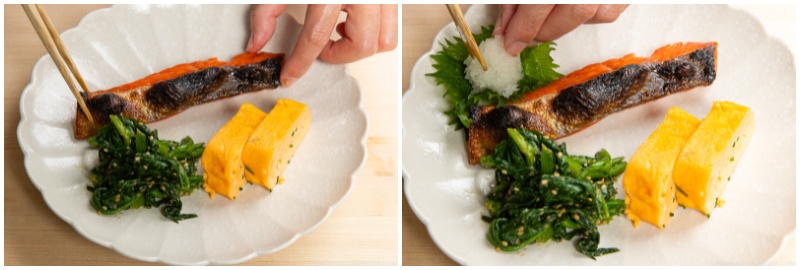Surrounded by the ocean, Japan has relied on fish and seafood as a major source of protein for the Japanese people for centuries. I have many favorite fish and seafood dishes myself, but Japanese Salted Salmon (Shiozake or Shiojake) has to be one of the most classic grilled fish we enjoy of all time! The natural richness and charred flavor of the grilled salmon are simply wonderful to eat as a part of breakfast, lunch, or dinner. You’ll need only 3 simple ingredients to make this recipe at home!
What is Japanese Salted Salmon?
Japanese Salted Salmon is called Shiozake or Shiojake (塩鮭) and it’s made of salmon and salt with the addition of sake to clean the fish. If you have been to Japan, you probably recall seeing or trying a traditional Japanese breakfast similar to the picture below. The breakfast set includes salted salmon (shiozake), steamed rice, miso soup (I made Tonjiru), a vegetable side (I made broccoli gomaae), and an egg dish (I made Tamagoyaki). Aside from traditional Japanese breakfast, you may find salted salmon in a bento lunch box or as a filling for Japanese Rice Balls (Onigiri). Salted salmon is so versatile that I also use it in my Salmon Fried Rice, Ochazuke (a simple rice dish in green tea), and Okayu (Rice Porridge). I used to buy prepared salted salmon from a Japanese supermarket for convenience. However, it can be a bit salty. Since my children love salted salmon and its crispy skin, I decided to slice the salmon fillets myself and started making my own salted salmon at home. Turns out, it was ridiculously easy and economical that I didn’t need to buy the prepared salted salmon from a Japanese grocery store anymore. I hope you are inspired to make your own, too!
Ingredients for Japanese Salted Salmon
Japanese-style salmon fillets (I recommend firmer and less-fatty Sockeye salmon; you can slice your own fillets) Salt (I use Diamond Crystal kosher salt) Sake to clean the fish
That’s it, just 3 simple ingredients!
How to Make Japanese Salted Salmon
You can make a larger batch of salted salmon at once and keep them frozen to enjoy at a later time.
How to Cut Salmon into Japanese-Style Fillets
As I mentioned earlier, it’s very easy to cut a salmon fillet into Japanese-style thin fillets. Why do we have to cut it this way? The fillets are much thinner so it’s quicker to cook through. As it’s diagonally sliced, the salmon fillet has its skin on top of the fillet. It’s perfect for broiling the skin to achieve a crispy texture. To cut the side of the salmon, place the salmon skin side down with the narrow tail end to your left (the head end is wider). Next, cut off the tail’s narrowest part, which is too small for Japanese-style fillets. Tilt your knife back about 30 degrees and diagonally slice the salmon toward the tail end. I decide the portion size based on the look of the salmon fillet and slice the fillet into 1 inch (2.5 cm) thickness. The typical Japanese-style fillets are 60-80 grams (2.1-2.8 ounces), which are much smaller fillets than Western-style fillets. You can read the detailed tutorial on How to Cut Salmon into Japanese-Style Fillets. There you have it! You can use the same cutting technique to cut other kinds of salmon for Japanese-style fillets.
Salting Salmon with the Right Amount
Traditionally, when there was no refrigeration, salmon was salted to improve its shelf life and to keep up with the abundance of salmon catches. By salting, the water is removed and the fat is converted to amino acids, which results in improving the taste. The higher the salt concentration is, the better the preservation is. Depending on the amount of salt, salted salmon is categorized into two types:
ama-kuchi (甘口) (5-8% salt concentration) kara-kuchi (辛口) (8% or more)
However, people are more health-conscious these days, and the supermarkets sell their ama-kuchi salted salmon as 3%, chu-kara (中辛) as 5%, and kara-kuchi as 8% or more. If you’re not familiar with Japanese fermented foods such as soy sauce, miso, umeboshi, and pickles, you may find the salted salmon a little strong on taste. Even for the Japanese, we do not eat salted salmon by itself, and we always eat a small portion of salted salmon (typically 3 oz or 80 g) with steamed rice. Do we need to use sake? Sake (alcohol in general) has the effect of removing the odor of fish (and meat). You can prevent the odor by sprinkling sake directly on the ingredients and the odor will be also evaporated with the alcohol. If you don’t consume alcohol, you may skip sake. It looks like a lot of salt. Can we reduce the amount? 5% of salt for shiozake (salted salmon) is standard in Japan. You can reduce the salt to 3-4%, but less ideal for longer preservation. It’s too salty for me. How can I remove the saltiness? The general method is to soak in dilute salt water or water to remove the salt, but the salt tends to be removed too much and become dry and watery. The recommended method is to use sake and mirin to remove the salt. Put salted salmon in a mixture of 2 parts sake and 1 part mirin and keep in the refrigerator for 3 hours. Pat dry and ready to cook.
What to Serve with Shiozake
Japanese salted salmon is such a delightful dish to enjoy, especially for traditional Japanese breakfast. Make sure you have good-quality Japanese short-grain rice and miso soup to go with this dish. I’ve also served:
Japanese Sweet Rolled Omelette (Tamagoyaki) Japanese Spinach Salad with Sesame Dressing (Gomaae) Soy Sauce Pickled Cucumber
Other Delicious Japanese Salmon Recipes
Miso Salmon Mirin Salmon Teriyaki Salmon Miso Butter Salmon Salmon Flakes Salmon Fried Rice
Wish to learn more about Japanese cooking? Sign up for our free newsletter to receive cooking tips & recipe updates! And stay in touch with me on Facebook, Pinterest, YouTube, and Instagram. Editor’s Note: This post was originally published on December 2, 2012. The post has been updated with new images and more helpful content in March 2022.
